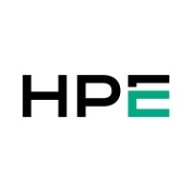


VMware VeloCloud SD-WAN and Aruba Orchestrator are strong contenders in the SD-WAN market. VMware VeloCloud appears to have the upper hand with its advanced Dynamic Multipath Optimization, integration with cloud services, and dashboard visibility.
Features: VMware VeloCloud features Dynamic Multipath Optimization (DMPO) enhancing link quality, zero-touch provisioning for simplified setup, and seamless integration capabilities with cloud services. Aruba Orchestrator focuses on WAN optimization, intent overlay for easier network management, and provides a single pane of glass view for comprehensive network visibility.
Room for Improvement: VeloCloud could benefit from enhancing its security features and expanding its global support network while offering better pricing models and user-friendly documentation. Aruba Orchestrator needs simpler management menus, more deployment flexibility, and better reporting capabilities with improved dynamic security certificate management.
Ease of Deployment and Customer Service: VMware VeloCloud provides flexible deployment options across private, public, and hybrid cloud environments but faces challenges in technical support consistency. Aruba Orchestrator is straightforward for hybrid and on-premises deployments, facing some complexities due to fewer configuration touchpoints. Aruba's support is generally positive with room for enhancements in training and documentation.
Pricing and ROI: VMware VeloCloud is competitive yet pricey, justified by its features, offering ROI through improved productivity over time, particularly for large-scale deployments. Aruba Orchestrator is seen as more cost-effective with subscription-based models that eliminate maintenance contracts, providing an appealing cost-to-feature ratio for enterprises.
Clients are now comfortable and not wasting productive hours on IT support.
The automation part is giving us a cost benefit and speed; we can react faster.
It's a very useful tool to mitigate and protect your enterprise.
I have seen a return on investment and financial benefit from using Aruba Orchestrator.
We don't see return on investment, but we love the technology, so we purchase because of the technology.
The deployment time with VMware VeloCloud SD-WAN saves 50 percent compared to traditional MPLS networks.
They offer very accurate solutions.
The quick resolution of issues with Fortinet FortiGate is due to the support of the company and the fact that the equipment is easy to work with.
I would rate the technical support for Fortinet FortiGate a ten out of ten.
The technical support of Aruba is very supportive and excellent.
I would rate my experience with technical support from Aruba as eight out of ten.
I appreciate having dedicated service engineers who manage our account and ensure any technical issues are addressed efficiently.
They scale up really well from smaller models like the FortiGate 40 and 50 to bigger sites with the FortiGate 100 for more throughput - up to enterprise datacenters.
The variation comes in terms of the interfaces and throughputs, but from a security perspective, you get the same benefit, irrespective of whether you have an entry-level unit or an enterprise.
We determine sizing based on multiple factors: number of users, available links, traffic types, server count, services in use, and whether services will be published.
The customer base for VMware VeloCloud SD-WAN has been growing 30 to 40 percent per year when transitioning from traditional MPLS networks.
We're experiencing 99.999% availability consistently.
I would rate the stability of Fortinet FortiGate a ten out of ten.
Currently, we are experiencing a general outage of one of the main internet service providers of the Dominican Republic, and we have not been impacted in our operations because with SD-WAN, we have another internet service provider and we are working with the second WAN connection without any disruption.
We had Cisco infrastructure in the past before we replaced it with Aruba, and our experience is much better with Aruba compared to Cisco—far, far better.
The technical team from VMware VeloCloud SD-WAN addresses these issues promptly, making us very happy with their support.
Overall, VMware VeloCloud SD-WAN is a stable solution.
Investing in a solution that can accommodate such growth would be more cost-effective than repeatedly purchasing new hardware.
While Fortinet claims to offer a comprehensive network solution, it falls short in addressing computer application issues, particularly server security.
When considering Sophos XG, which we also use, the logging and reporting functionality is notably more efficient.
The price should be improved as it is very high.
It would be great if they would have a fully multi-tenant solution on their Orchestrator.
I would like to see improved security features, such as adding more SASE functions.
Unlike the comprehensive reports we receive from Palo Alto for our firewalls, VMware VeloCloud SD-WAN doesn't offer detailed reports that effectively convey the solution's benefits to management.
Last year, I renewed the support for three years, which can sometimes be expensive but depends on the security benefits and how it helps us.
It offers cost savings as it is generally cheaper than the competition.
It is about 20% cheaper.
Regarding my experience with the pricing and setup costs, I find it expensive software compared to others.
The pricing is high, making the margin thin, which limits mark-up opportunities from the wholesale price.
The pricing involves licensing for the VeloCloud gateway based on the bandwidth used.
In terms of security, we have not experienced any security flaws or loopholes, and it has proven to be quite stable.
FortiGate has helped reduce the risk of cyberattacks that might disrupt our client's production.
These features help reduce our downtime, manage the ISPs, and deploy SLAs for all the website traffic.
Integration capabilities with cloud and on-prem environments help my organization maintain a hybrid approach.
The security features of Aruba Orchestrator are really good; I don't think there is any issue with security.
It's really great that it connects today all the gateways and SD-WAN solution with the SASE and the zero trust network access.
Its proprietary Dynamic Multipath Optimization (DMP) technology is regarded as the most powerful and valuable function by VMware VeloCloud SD-WAN.
Previously, organizations used MPLS links for 1 MB at around $200, but now they can use 4G or 5G SIM cards for half that price while achieving more bandwidth.
VMware VeloCloud SD-WAN has truly transformed our environment, providing significantly more bandwidth at lower costs, which is essential for tasks like Teams calls.
| Product | Market Share (%) |
|---|---|
| Fortinet FortiGate | 18.3% |
| VMware VeloCloud SD-WAN | 9.6% |
| Aruba Orchestrator | 1.4% |
| Other | 70.7% |



| Company Size | Count |
|---|---|
| Small Business | 350 |
| Midsize Enterprise | 130 |
| Large Enterprise | 187 |
| Company Size | Count |
|---|---|
| Small Business | 5 |
| Midsize Enterprise | 1 |
| Large Enterprise | 5 |
| Company Size | Count |
|---|---|
| Small Business | 23 |
| Midsize Enterprise | 14 |
| Large Enterprise | 20 |
Fortinet FortiGate excels in providing integrated VPN, firewalling, and Unified Threat Management (UTM) with centralized management and high availability. It supports remote access and comprehensive threat protection, making it a preferred choice for securing networks.
Fortinet FortiGate offers a robust security platform with features such as strong intrusion prevention, application control, and web filtering. Its integration with Active Directory and SD-WAN functionality provides scalable solutions for large networks. Users appreciate its ease of use through centralized management interfaces, ensuring robust security with flexible configurations. However, FortiGate could enhance its graphical interface and technical support responsiveness, address firmware bugs and costly licensing, improve logging, integrate better with third-party tools, and strengthen scalability and memory for log storage. Complexity in configuration and the need for intuitive features are noted challenges, and there's a demand for advanced security, zero-trust capabilities, and AI integration.
What are the key features of Fortinet FortiGate?Fortinet FortiGate is widely implemented across industries like education, finance, and government. Companies use it for firewall protection, VPN, and SD-WAN capabilities, ensuring secure perimeter and data center security. It facilitates remote access management and traffic routing optimization, offering reliable security and connectivity solutions.
Aruba Orchestrator has an intuitive interface that allows you to centrally define, assign, and enforce policies across the WAN. Network managers experience the highest quality of experience to:
Centrally define, assign and enforce policies based on business intent to secure and control all application traffic across the WAN.
Orchestrator dashboards provide real time visibility into SD-WAN health and performance in a single screen, monitoring traffic throughput along with loss, latency and jitter across overlays and underlays.
Maintain the highest levels of application performance by automatically assigning application and security policies across 100s or 1000s of sites, including automated orchestration with cloud security services.
Central orchestration of network functions including SD-WAN routing, firewall, segmentation, WAN optimization, application visibility and control, and automated orchestration with cloud security services.
VMware Software-Defined Wide Area Network (SD-WAN) is a secure access service edge (SASE) platform that combines many types of software-based network technologies in an attempt to enable users to virtualize their wide area networks and reduce their reliance on hardware. In essence, this solution makes it possible for users to reliably access their applications from anywhere in the world by leveraging cloud technologies. Users can simply, efficiently, and completely control their network devices and traffic. It ensures that organizations are always able to use the best possible connection to their data centers. VMware SD-WAN steers traffic so that it is always using the most reliable connections and at the same time takes steps to remediate any problems that it detects in other network links. This guarantees that organizations can access high-priority applications at all times.
VMware SD-WAN Benefits
Some of the ways that organizations can benefit by deploying VMware SD-WAN include:
VMware SD-WAN Features
Reviews from Real Users
VMware SD-WAN is a solution that stands out when compared to many of its competitors. Two major advantages it offers are its ability to automate the process of creating and maintaining a virtual local area network and its intuitive user dashboard.
Sami I., principal cloud architect at Loihe, writes, “One of the solution's most valuable features is the VMware core automation stack at an SDDC. It includes NSX, the VMware virtualization layer for the networks (the LAN virtualization), which works extremely well with the VMware SD-WAN solution and is the primary advantage over all the others. None of the other vendors could integrate with the virtual LAN, making it quite complicated and virtualized to be fully automated.”
Chih S., senior technical consultant at a tech services company, says, “The product has a very good user dashboard that is simple to navigate.”
We monitor all Software Defined WAN (SD-WAN) Solutions reviews to prevent fraudulent reviews and keep review quality high. We do not post reviews by company employees or direct competitors. We validate each review for authenticity via cross-reference with LinkedIn, and personal follow-up with the reviewer when necessary.